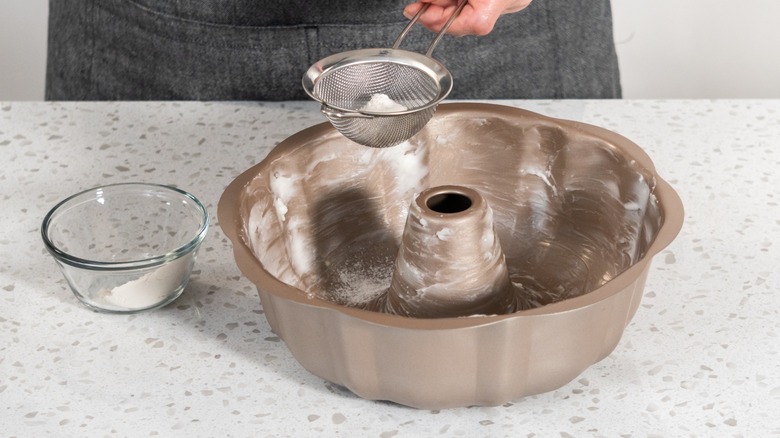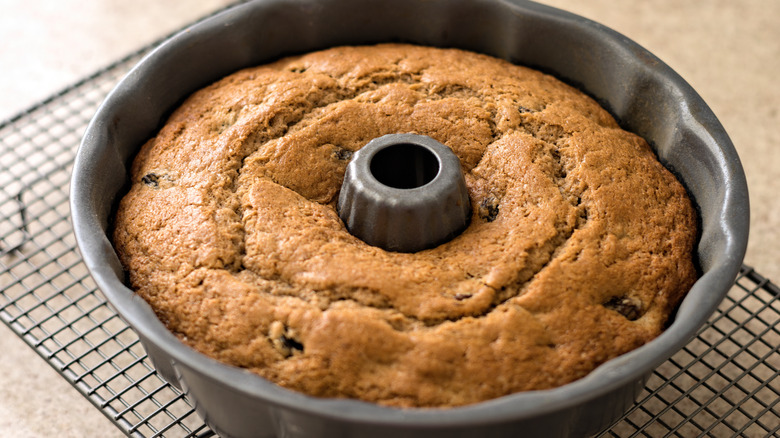How To Properly Grease A Bundt Pan
We've all seen those gorgeous Bundt pans rippling with flutes, arches, and swirls. But those pretty pans can be a pain unless you know how to prepare your bakeware so the cake won't stick and fall apart when you try to release it. For a dependably crumble-free release, start by greasing the pan. Shortening and lard are easy to spread, but lard is not vegetarian-friendly. Butter has a rich flavor, but needs to be softened first. You can also use baking sprays made with oil and flour, but avoid oil-only sprays, which can leave a residue that makes future desserts stick.
Whichever type of grease you choose, getting a Bundt cake to slip out perfectly depends on how you apply it to the pan. Use a pastry brush to spread a thin layer across each nook and cranny, along with the inner tube. Brushing is key to even coverage, so don't skip this step even if you use a spray.
Next, you'll need to dust the pan. Traditionally, bakers use flour. However, Bundt cakes are often served bare to show off their forms and white flour residue may look unattractive on darker cakes. So for chocolate cakes, try using cocoa powder to flower cake pans which will blend in more seamlessly. Granulated sugar also works, forming a sweet crust during baking and almond flour can add a hint of nutty flavor.
How to ensure your baked goods properly come out of the Bundt pan
After you've greased and dusted the pan with flour or sugar, then turn it on its side and give it a hard pat to sprinkle the inner surface. Turn and pat again, continuing until the whole inside is covered. Then shake out any excess and add your batter. Tap the bottom of the Bundt pan to remove air bubbles and let the batter rest for five minutes to fill in the hollows before baking.
Once your cake is done, allow it to cool on a baking rack for 10 minutes. Then lay a towel on the counter and pick up the pan. Keeping the pan right-side up, turn it at a slight angle and knock it firmly against the counter. Turn the pan a few degrees and knock it again, continuing in this way until you've made a full circle. You should see the cake pulling away from the edges of the pan. When it's loose on all sides, knock the bottom of the bakeware against the counter one more time to help that section release.
At last, the big moment is here. Hold the baking rack over the top of the cake and flip. Hopefully, your cake will release in all of its fluted and fancy glory. If not, you can rescue crumbled cakes with buttercream frosting, decorative fruit, or edible flowers, or simply chalk your first try up to experience and serve it up as a trifle instead.

